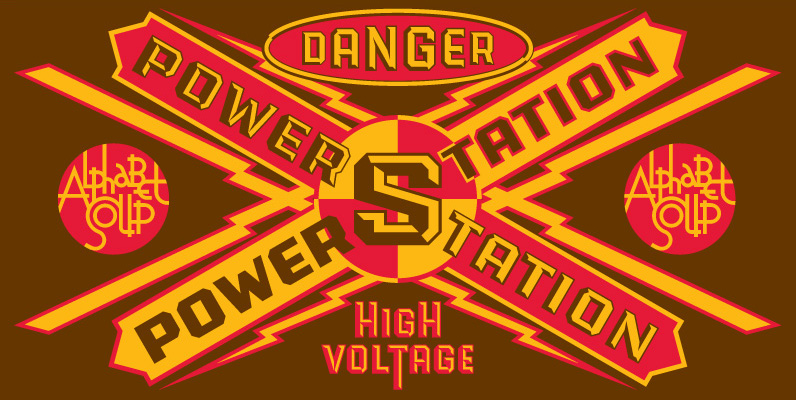Bifur was originally designed by poster artist A.M. Cassandre. This Art Deco type design was issued by the French foundry Deberny & Peignot in 1929. Even upon it’s original release and promotion, suggestions on how not to use Bifur were presented. As with most highly decorative display faces, the use should be selective and used sparingly. Of course the layout of “THIS IS NOT THE WAY TO USE BIFUR” in repeated paragraph form has become a famous design and appears in many surveys of design history.
Bifur (abbreviation of Bifurcation: a division into two parts) was originally designed as a single font (cut in several sizes with the number of parallel lines increasing as the point size increased) and also as a two-part font that could be printed in two solid colors. Cassandre only designed the upper case characters, numbers and basic punctuation. The “bifurcation” occurs with the bold “keyline” being the most basic recognizable element in the Letter ( Z and N being simply a diagonal line) and the secondary part being a solid shape or a tone created with the parallel lines). It was fairly popular (although not a financial success) and often imitated for display lettering. Occasionally these imitations made some innovations but mostly they were poor substitutes. One imitator attempted a lower case. This was used as a starting point for the P22 version which adds a lower case while keeping the upper case and all original characters true to the original Cassandre design.
The 6 font family of P22 Bifur was created with a range of uses in mind. P22 Bifur A features wide lines and line spacing. This is intended to be used at 48 points and larger. P22 Bifur B features narrow lines and line spacing. This is intended to be used at 100 points and larger. P22 Bifur C features only the Keyline. Upper case could be used by itself for experimental typography, but this is intended to be used as a companion to P22 Bifur D, E or F) To use the two-part fonts see “DESIGN TIP” below. P22 Bifur D features the solid counter shapes to accompany P22 Bifur C. P22 Bifur E features the wide line option to accompany P22 Bifur C. P22 Bifur F features the narrow line option to accompany P22 Bifur C.
Design Tips: When using the two part Bifur fonts (P22 Bifur C along with either D,E or F), the best way to start is typing your text using a fully legible font (or A or B). The two part fonts can be done in any page layout program that supports layering (Illustrator, Freehand, Photoshop, Corel Draw). After typing your text, select one of the Bifur fonts and arrange the size and layout as desired. If you set up horizontal and vertical guidelines, you can move the text box to “snap” into a corner. You can then copy the text box and change the Bifur font to it’s companion font. If you drag the second text box to the same guidelines, the two should be aligned perfectly one on top of the other. If the wrong one is on top then send it to the back. You can then group the two text boxes and move them together to the prefered area of your design.
Designed in 2004 by Richard Kegler exclusively for P22 type foundry / International House of Fonts. Special thanks to Amelia Hugill-Fontanel, David Pankow and the Cary Graphic Arts Collection at the Rochester Institute of Technology.
Also see Skute, YouWorkForThem’s hand-drawn approach to Biffur created in 2009.

